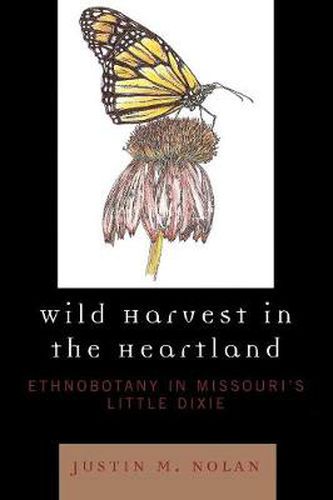Readings Newsletter
Become a Readings Member to make your shopping experience even easier.
Sign in or sign up for free!
You’re not far away from qualifying for FREE standard shipping within Australia
You’ve qualified for FREE standard shipping within Australia
The cart is loading…






This work is a detailed study of people and plants in Little Dixie, a seven-county region of central Missouri. Based on three summers of field research, Professor Nolan combines ethnoscience with folklore to document what and why people know about wild plants in this little-known section of the American Midwest. The book is organized around the cognitive and behavioral differences between local experts and ‘novices’ who gather wild plant foods and medicines regularly throughout the seasons in Little Dixie. Ethnobotanical knowledge is described as an ongoing interaction between ecology and cognition, under constant modification by shifting cultural beliefs about edibility, efficacy, and sensory appeal. As consumable resources and symbols of belonging, wild plants are detailed with ethnographic context and vivid pen-and-ink sketches. Wild Harvest in the Heartland will appeal to a broad audience of anthropologists, ethnobotanists, folklorists, and ecologists, and will provide a welcome resource for naturalists, conservationists, and outdoor enthusiasts.
$9.00 standard shipping within Australia
FREE standard shipping within Australia for orders over $100.00
Express & International shipping calculated at checkout
This work is a detailed study of people and plants in Little Dixie, a seven-county region of central Missouri. Based on three summers of field research, Professor Nolan combines ethnoscience with folklore to document what and why people know about wild plants in this little-known section of the American Midwest. The book is organized around the cognitive and behavioral differences between local experts and ‘novices’ who gather wild plant foods and medicines regularly throughout the seasons in Little Dixie. Ethnobotanical knowledge is described as an ongoing interaction between ecology and cognition, under constant modification by shifting cultural beliefs about edibility, efficacy, and sensory appeal. As consumable resources and symbols of belonging, wild plants are detailed with ethnographic context and vivid pen-and-ink sketches. Wild Harvest in the Heartland will appeal to a broad audience of anthropologists, ethnobotanists, folklorists, and ecologists, and will provide a welcome resource for naturalists, conservationists, and outdoor enthusiasts.